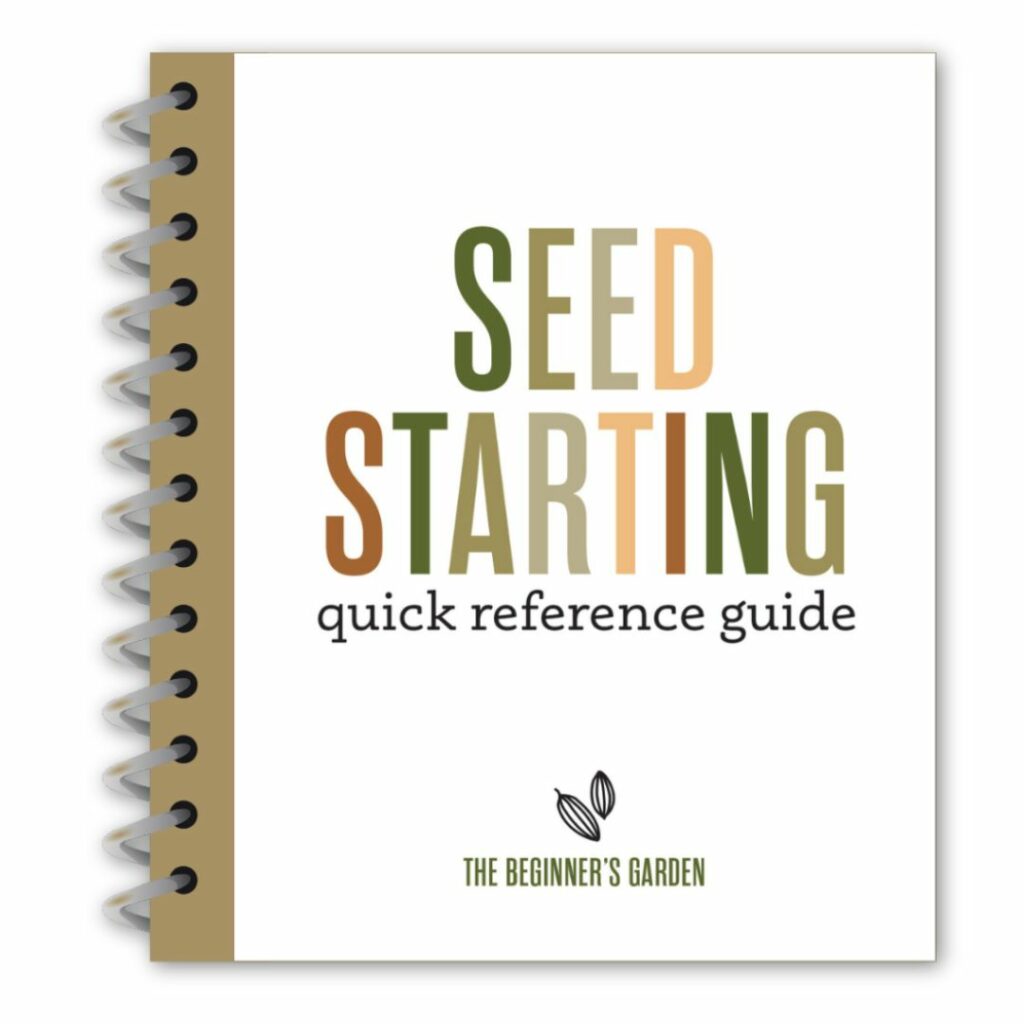What to Plant First in Your Garden
Have you ever wondered what to plant first in your garden? A lot of first-time gardeners make the mistake of thinking that as soon as the last frost has come and gone, it’s safe to plant everything at once.
What beginners don’t realize is that while you can plant everything, your garden will have limited success and it might discourage you from trying again next year. Not only that, but if you plant all at once, you are only taking advantage of one third of the potential of your garden.
Join me today as we dive into what are the best crops to plant first in your garden. We will also talk about what you can plant during the other non-summer months of the year, so that you can extend your growing season into all three seasons – spring, summer and fall. The best part, I’ll show you how you can do this all in one garden space!
Before we begin, if you’d like to watch a podcast episode instead about the first crops to plant in your garden, you can do so here:
What To Plant First In Your Garden
Let’s discuss the crops you should sow initially in your garden with these topics:
- Cool Weather Crops
- Three Types of Plants to Plant First
- What Seeds To Start Indoors
- Which Crops To Plant Outdoors
- Guide To Planning What To Plant At The Beginning
Don’t forget to snag your 2024 Garden Planner now!
Cool Weather Crops
The main thing to understand about what to plant first in your garden is that unless you are starting your garden after your average last frost date, you will be planting cool weather crops. (If you are starting after your average last frost date, skip the cool weather crops and go straight to warm weather crops.) Cool weather crops can easily take a frost and can even handle freezing temperatures all the way down into the 20s if your crops are acclimated to it.
Three Types of Plants to Plant First
There are three types of cool weather seeds you’ll plant first:
- Seeds started indoors
- Seeds started directly in the garden
- Outdoor transplants
Indoor seeds that you will plant first are seeds that take longer to grow and need more time to sprout. A few of these indoor seed crops are onions, broccoli, and cabbage.
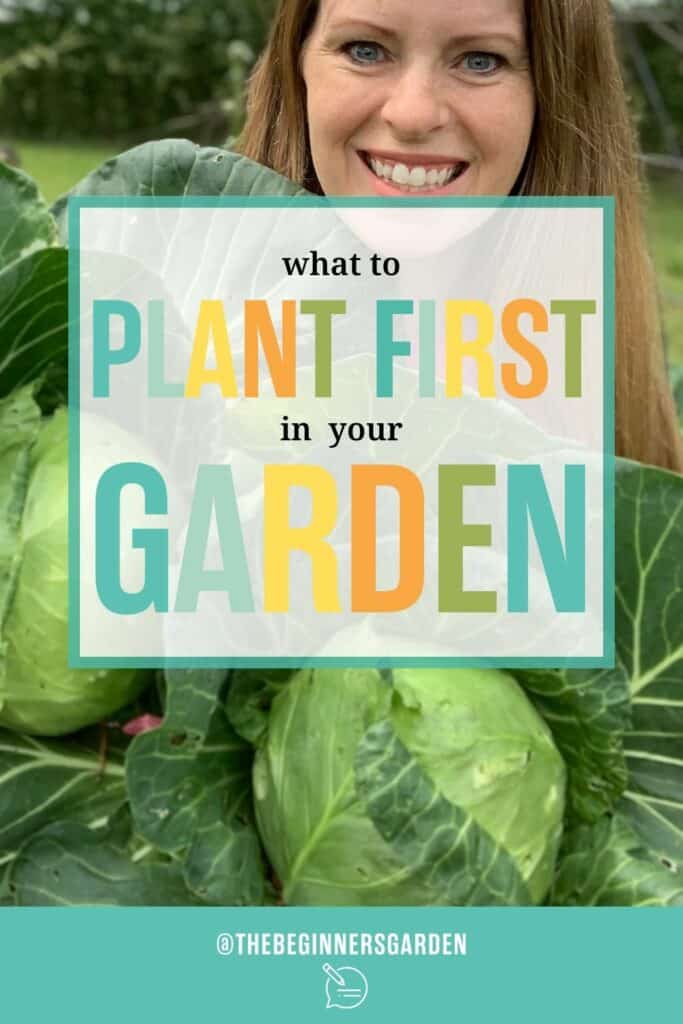
Next, you’ll want to plant outdoor seeds that can hold up to cooler temperatures and will germinate in cooler soil. Crops like spinach and kale are the types of outdoor seeds that can handle and thrive in cool soil.
Finally, you will also want to plant some outdoor transplants that can successfully handle a frost and a light freeze. Some examples of outdoor transplants are the same ones you started from seed indoors — or you can purchase them at the garden center — like broccoli, cabbage, and cauliflower.
If you are looking for a guide showing you when to plant your seeds or transplants, you’ll want to grab our FREE Seed Starting Quick Reference Guide.
What Seeds To Start Indoors
There are a few seeds I recommend starting indoors and it’s not because they can’t handle the cold; it’s because they need more time to grow, so starting them indoors is a great idea. These crops don’t enjoy the heat — many of them won’t make it when temperatures rise — making their head start crucial to success.
The very first seeds you’ll want to start indoors are onions. Onions take longer to grow, in fact, they need to be planted 12-16 weeks before the average last frost date.
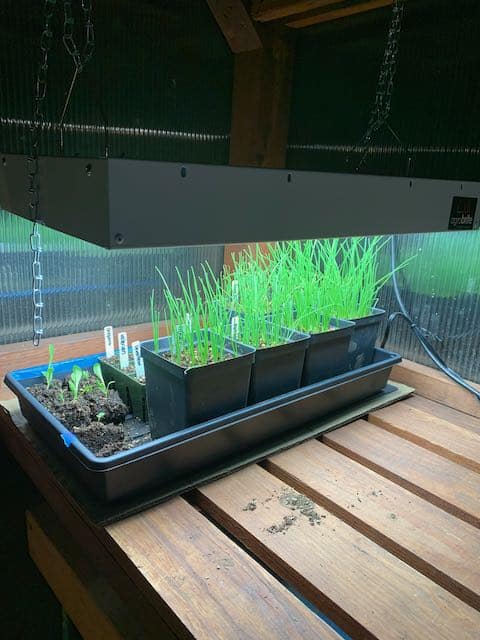
After onions, you’ll want to start broccoli, cabbage, cauliflower, and kale seeds. Begin these seeds indoors six weeks before you would want to plant them out in your garden, or 10-12 weeks before your average last frost date.
Finally, the last seeds I recommend that you start indoors are lettuce. You’ll want to start your lettuce seeds 4-6 weeks before you plant out in your garden, or as early as 8-10 weeks before your average last frost date. If you are able to cover your crops (when necessary) you can plant them in the garden as early as 6-8 weeks before your average last frost date.
With broccoli, cabbage, cauliflower, and kale, you’ll want to plant early so you can get them in the ground sooner; they are very susceptible to heat. But with lettuce, you can plant later, or consider succession sowing them so you keep getting a harvest of lettuce throughout the spring.
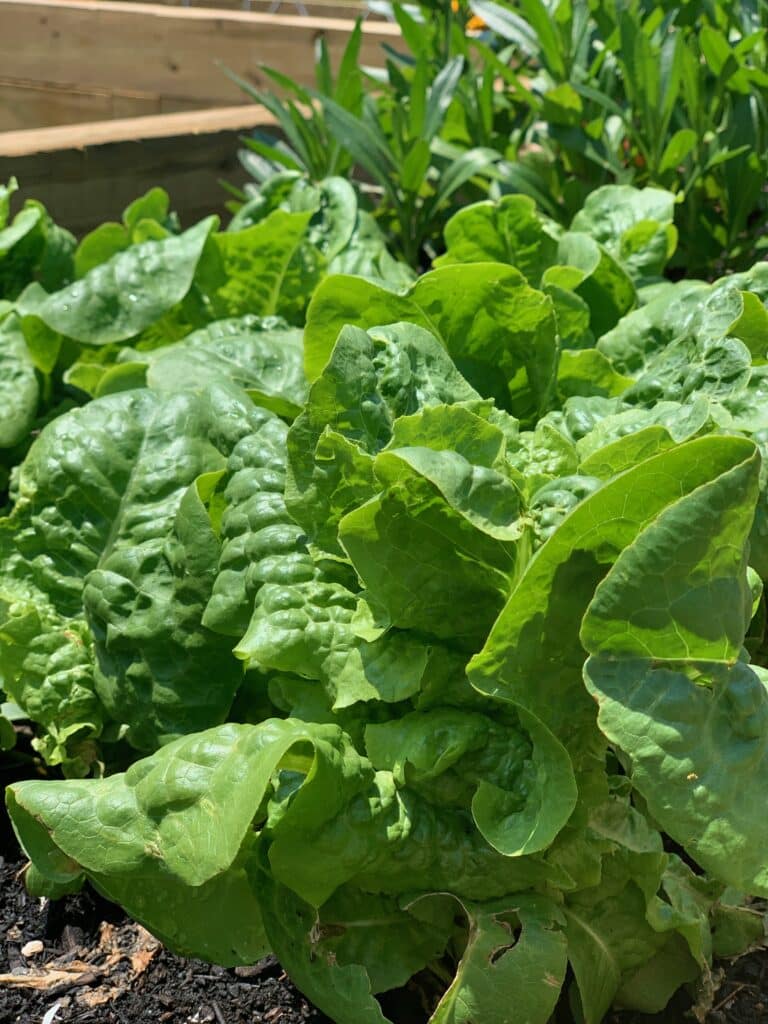
Which Crops To Plant from Seed Outdoors
When it’s time to plant your crops in your garden, these are the first plants I recommend you plant outdoors. Start with spinach, but wait until the outside soil temperature is at least 40 degrees.
After you plant spinach, move on to brassica greens like arugula, kale, mizuna, mustard, pak choi, etc. The soil temperature needs to be between 45 and 75 degrees. I like to start these about 10-12 weeks before my average last frost date and sow them every two weeks after for a continual harvest.
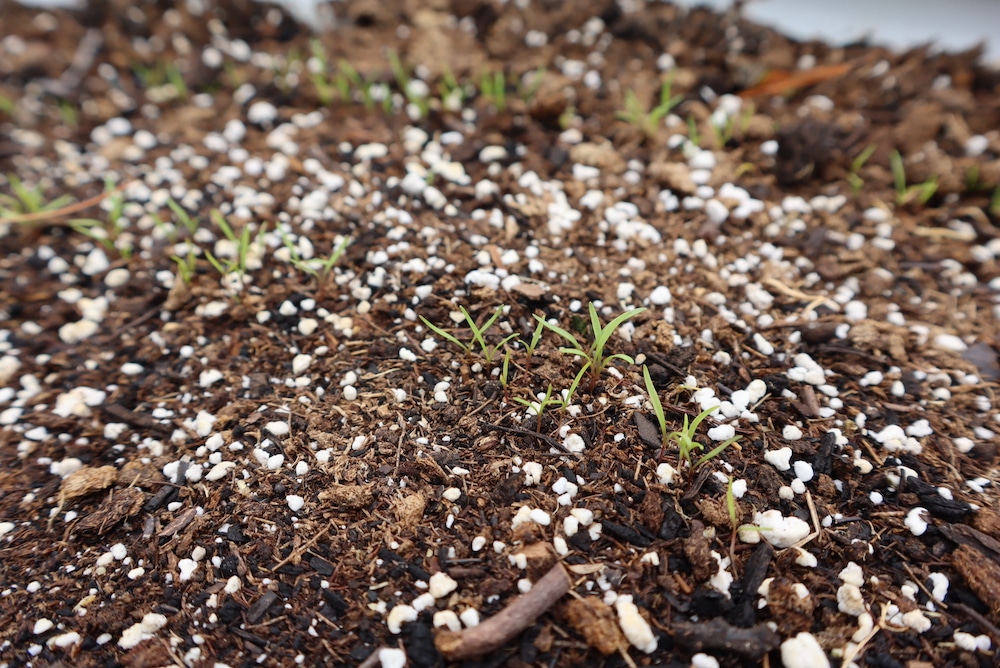
Approximately 4-6 weeks before the average last frost date, as long as the soil is workable and the soil temperature is at least in the 50s, your garden is likely ready for carrot seeds, beet seeds, pea seeds, and seed potatoes. With cool soil, they may take a couple of weeks to sprout, but keep them watered and be patient.
Which Crops to Plant as Transplants
The first transplants to go into your garden will be the same ones that you started from seed indoors. You can also usually purchase these at your local garden center. The timing of the planting of broccoli, cabbage, onions, etc., will usually fall around 4-6 weeks before your average last frost date.

But because late winter can be so variable, be prepared to cover young plants if freezing temperatures come shortly after planting. Once they are acclimated to the cold, they can handle a frost and freeze.
Guide to Planning What To Plant at the Beginning
When you are trying to determine which crops to sow at the beginning, it’s always helpful to have a guide for your planning. My hope is that you learned some tips on what to plant first, as well as some practical steps on how to plant those crops.
Always consider how your season is going when you actually plant your crops in your garden. It’s best to transplant during a mild spell. Checking the soil temperature with a soil thermometer before planting is always helpful.
You’ll notice that none of the “typical” summer crops are listed here. Tomatoes, cucumbers, beans, squash, and peppers, for example, should not be planted out in the garden until after your last frost has passed.
But, about 6-8 weeks before that time, you can begin sowing your tomato and pepper seeds indoors. (But don’t plant these warm season crops ahead indoors if you’re a beginner.)
I hope you’re able to see the possibilities of creating a 3-season garden. It all starts with planting cool season crops early enough and then moving to warm season crops after your last frost has passed. Then, you can plant cool season crops again for a fall garden!
Do you get overwhelmed with garden planning?

Subscribe here for my best tips to plan your garden in just 7 days -- all for FREE.
Plus, I'll send you my "In the Garden E-mail" on Fridays, periodic updates on garden resources relevant to you, and you'll receive access to my entire bank of free garden downloads!
You are also agreeing to our privacy policy.


